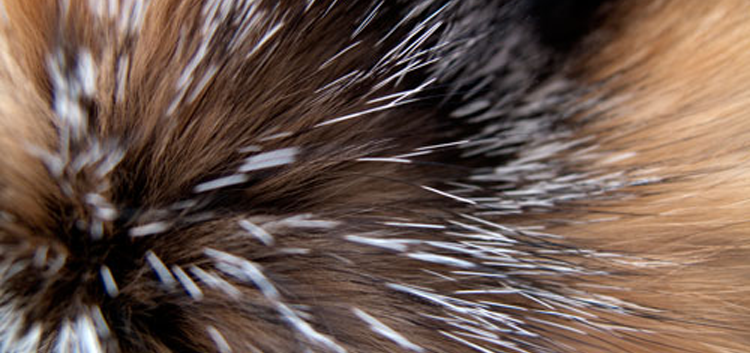
Fur processing techniques
FUR DRESSING
The first step in processing fur is tanning the leather-side of the pelt, so it will remain soft and pliable for many years without deterioration. This is called “dressing” the fur pelt.
Expert technicians use a revolving blade to scrape away fat and excess leather, to make the pelt more lightweight and pliable. This is called “fleshing”. The pelts are then soaked in a tanning solution. Unlike the tanning of leather, where the goal is to remove hair completely from the hide, fur-tanning solutions must be gentle enough to protect hair follicles while preserving the hide and enhancing the natural beauty of the fur. This is called “fur dressing”.
The main chemicals used to “dress” fur pelts are table salt, water, alum salts, soda ash, sawdust, cornstarch, lanolin and other natural ingredients.
Gentle acids (such as acetic acid, which is vinegar) activate the tanning process, but modern environmental protection controls ensure that there are no harmful effluents. Excess fats are skimmed and pH levels must be neutralized before waste water is released from the tanning vats.
After the pelts are removed from the tanning vats, natural oils (vegetable oil, lanolin) are added to the leather side, to soften them. The furs are then placed into large revolving drums, with hardwood sawdust, to remove excess grease and further soften the pelts. This is called “drumming”.
After “dressing”, the fur pelts are soft and pliable, and the natural beauty of the fur will last for decades. Traditionally, the furs would now be ready for fabrication – and often they are still are used in this form. But today, many furs are “plucked” and sheared, dyed, or processed in other ways to further enhance their natural qualities.
“PLUCKING” & SHEARING
All true fur pelts include two main types of hair. The part of the fur we usually see is the “guard hair” — long, relatively course fur that protects animals from branches and other natural hazards. Most of the warmth of fur, however, is provided by the soft, dense underfur (called the “duvet”), which acts as insulation for the animal.
In order to provide softer, lighter-weight and less bulky fur apparel without sacrificing much of the warmth, the course guard hairs are sometimes be removed (“plucked”) using special hand-craft techniques. The underlying “duvet” can then sheared to a uniform pile, producing a soft, lush and velvety effect. North American processors and fur manufacturers have long been recognized worldwide for producing the finest sheared beaver pelts and apparel, but this technique is now also being used for mink, muskrat, otter, raccoon and other furs.
FUR “DYEING”
Because furs are available in an extraordinary range of natural colors, only a small proportion of fur pelts are dyed. In recent years, however, colored furs have gained popularity among designers and consumers. Fur dyes, however – like fur dressing – must be gentle enough to not harm the fur or hair follicles.
OTHER PROCESSING TECHNIQUES
A range of new processing techniques now make it possible to produce furs that are lighter-weight, more supple and comfortable, and more beautiful than ever.
Furs may now be married with leather or other materials. The skin side may be processed as leather or suede (“double face”) providing a reversible garment. In addition to traditional plucking and shearing, fur may be grooved, sculpted (“laser cut”), printed or knitted. Intarsia techniques treat fur like a stained glass window or mosaic, producing what can only be described as “wearable art”.
We have come a long way from the traditional, fur coat. Innovative dressing, dyeing and texturizing processes now inspire the designer and allow the creative process to begin even before the specific styling has been conceived.






